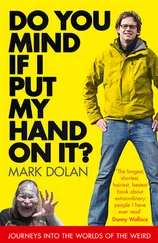Robert Monroe - Journeys out of the body, Practical Guidebook
Здесь есть возможность читать онлайн «Robert Monroe - Journeys out of the body, Practical Guidebook» весь текст электронной книги совершенно бесплатно (целиком полную версию без сокращений). В некоторых случаях можно слушать аудио, скачать через торрент в формате fb2 и присутствует краткое содержание. Жанр: Старинная литература, на английском языке. Описание произведения, (предисловие) а так же отзывы посетителей доступны на портале библиотеки ЛибКат.
- Название:Journeys out of the body, Practical Guidebook
- Автор:
- Жанр:
- Год:неизвестен
- ISBN:нет данных
- Рейтинг книги:5 / 5. Голосов: 1
-
Избранное:Добавить в избранное
- Отзывы:
-
Ваша оценка:
- 100
- 1
- 2
- 3
- 4
- 5
Journeys out of the body, Practical Guidebook: краткое содержание, описание и аннотация
Предлагаем к чтению аннотацию, описание, краткое содержание или предисловие (зависит от того, что написал сам автор книги «Journeys out of the body, Practical Guidebook»). Если вы не нашли необходимую информацию о книге — напишите в комментариях, мы постараемся отыскать её.
Journeys out of the body, Practical Guidebook — читать онлайн бесплатно полную книгу (весь текст) целиком
Ниже представлен текст книги, разбитый по страницам. Система сохранения места последней прочитанной страницы, позволяет с удобством читать онлайн бесплатно книгу «Journeys out of the body, Practical Guidebook», без необходимости каждый раз заново искать на чём Вы остановились. Поставьте закладку, и сможете в любой момент перейти на страницу, на которой закончили чтение.
Интервал:
Закладка:
With experience, the everyday analysis of the correspondence of dreams to reality begins to have an effect on a practitioner’s reasoning within the dream state. For example, that red crocodile’s presence in a rented apartment could cause doubts that give pause for reflection, which could in turn lead to the understanding that everything happening is just a dream.
ACTIONS TO BE DONE WHEN BECOMING
CONSCIOUS WHILE DREAMING
To ensure that dream consciousness leads to a fully developed phase experience, one of three specific actions must be taken.
The best is the technique is deepening, which should be immediately applied once dream consciousness occurs. Deepening must be performed within the dream episode before all other techniques. Doing so virtually guarantees entrance to the phase. The choice of actions that follow deepening is dependent upon a practitioner’s predetermined course of plan in the phase.
When becoming conscious while dreaming, it is quite dangerous to try to return to one’s body in order to roll out of it right away unless one has deepened beforehand. This could result in a situation where, after having easily returned to one’s body, one would not be able to separate from it, as the phase becomes significantly weaker when physical sensations coincide with the position of a real body. If one is to employ such an option, then in order to return to one’s body one should simply think about it, which is often sufficient to make the transition occur almost immediately.
Another option is the use of translocation techniques to arrive at a desired place within the phase world. It is also dangerous to employ this variation without first deepening; translocating in a shallow phase makes a return to the wakeful state very likely. Translocation is often accompanied by a substantial decrease in the depth of the phase state.
STRATEGY FOR ACTION
To achieve dream consciousness, constant practice is highly necessary because sporadic practice will fail to develop the requisite background thought processes.
As a rule, employing phase entry techniques within the context of dream consciousness produces results after several weeks, and the effects of the techniques are increasingly pronounced with time. If there are no results within a month or two, refrain from these techniques for a period of time, take a break for a week or two, and resolve to assume a fresh start later.
Practitioners often stop using these techniques after initial results as later effects become elusive and the frequency of dream consciousness rapidly declines. These techniques should not be abandoned after first yielding results, though a gradual decrease in practice is generally acceptable.
TYPICAL MISTAKES WHEN PRACTICING
BECOMING CONSCIOUS WHILE DREAMING
• Perceiving the state of dream consciousness as a non-phase state even though this phenomenon is one and the same with the phase.
• Attempting dream consciousness while performing other phase entrance techniques when it is better to focus on dream consciousness alone.
• When falling asleep, lacking sufficient desire to experience conscious dreaming even though this is critical.
• Continuing to yield to the plot of a dream even after achieving dream consciousness, whereas subsequent actions must be independent and based on free will.
• Incorrectly answering the question “Am I dreaming?” while dreaming.
• Forgetting to immediately begin deepening techniques when dream consciousness has been achieved.
• When exercising memory development, recalling the most vivid dreams instead of every dream.
• Inconsistent concentration while practicing dream consciousness techniques.
Exercises for Chapter 4
Questions
1. What is the difference between an out-of-body experience and dream consciousness?
2. After attaining dream consciousness, does the realistic quality of the surroundings differ from that of wakefulness?
3. Which technique can be used in a dream to become conscious in it?
4. Is it possible to achieve dream consciousness after the first attempt?
5. Is it true that not all people dream?
6. Why is learning to remember as many dreams as possible important for becoming conscious while dreaming?
7. What is dream cartography?
8. To experience dream consciousness, what must be done while falling asleep?
9. Could a tape measure become an anchor used to achieve dream consciousness?
10. What experiences in dreams often spontaneously give rise to a state of conscious awareness?
11. What must immediately be done after becoming conscious while dreaming?
Tasks
1. Every day, immediately before going to sleep, cultivate a strong desire to become conscious in future dreams.
2. When you wake up, recall or write down the episodes and plots of your dreams every day.
3. Try to achieve at least one instance of dream consciousness.
Chapter 5 – Non-autonomous Methods
THE ESSENCE OF NON-AUTONOMOUS METHODS
FOR ENTERING THE PHASE
Non-autonomous methods of entering the phase are various types of external influences that are able to help put a practitioner into the phase state. Computer programs, devices, various physical actions, the aid of a helper, or even chemical substances are examples of non-autonomous methods. In certain cases, these methods actually help while some hinder the possibility of a genuine phase experience.
Never count on a magical substance or machine to automatically eliminate the difficulties associated with phase entrance. If such a substance existed, the whole topic of phase experimentation would exist at an advanced level of development and prevalence in society.
In actuality, there are no devices or methods able to consistently provide access to the phase state. At best, these exist in a largely supplementary capacity, and the more a practitioner is able to do on his or her own, the more helpful and effective these supplements are.
If phase entry has not been mastered autonomously, then results through the use of supplements will be totally accidental.
The reason behind the weak effectiveness of non-autonomous methods of phase entrance rests in the fact that the physiological process responsible for the phase experience cannot be exactly defined. Only generalities are known, nothing else. In order to gain a clear understanding of the state, the processes that give rise to it must be discerned and analyzed. All existing technologies have either blundered down a clearly mistaken path (synchronizing the hemispheres of the brain), or travelled toward the detection and use of indirect indicators (cueing technologies).
CUEING TECHNOLOGIES
Of all non-autonomous assistance methods, cueing technologies yield the best results. The operating principle behind cueing technologies is quite simple: a device detects rapid eye movement (REM) and sends signals to a sleeping practitioner, prompting dream consciousness or an awakening that may be followed by indirect techniques. Cueing programs or devices may also send indicators over specific intervals of time; these are received during REM sleep and are meant to cause a sleeping practitioner to awaken and attempt indirect techniques.
More sophisticated REM-detecting technologies may be purchased at specialized stores or through online merchandisers.
REM-detecting technologies work by virtue of special night mask equipped with a motion sensor that detects the frequency of specific eye movements that occur during REM sleep. When the eye movements reach REM quality, the device sends discreet signals to the practitioner through light, sound, vibrations, or a combination of these. In turn, the practitioner must discern the signal and react to it while sleeping with the goal of phase entry through dream consciousness.
Читать дальшеИнтервал:
Закладка:
Похожие книги на «Journeys out of the body, Practical Guidebook»
Представляем Вашему вниманию похожие книги на «Journeys out of the body, Practical Guidebook» списком для выбора. Мы отобрали схожую по названию и смыслу литературу в надежде предоставить читателям больше вариантов отыскать новые, интересные, ещё непрочитанные произведения.
Обсуждение, отзывы о книге «Journeys out of the body, Practical Guidebook» и просто собственные мнения читателей. Оставьте ваши комментарии, напишите, что Вы думаете о произведении, его смысле или главных героях. Укажите что конкретно понравилось, а что нет, и почему Вы так считаете.










